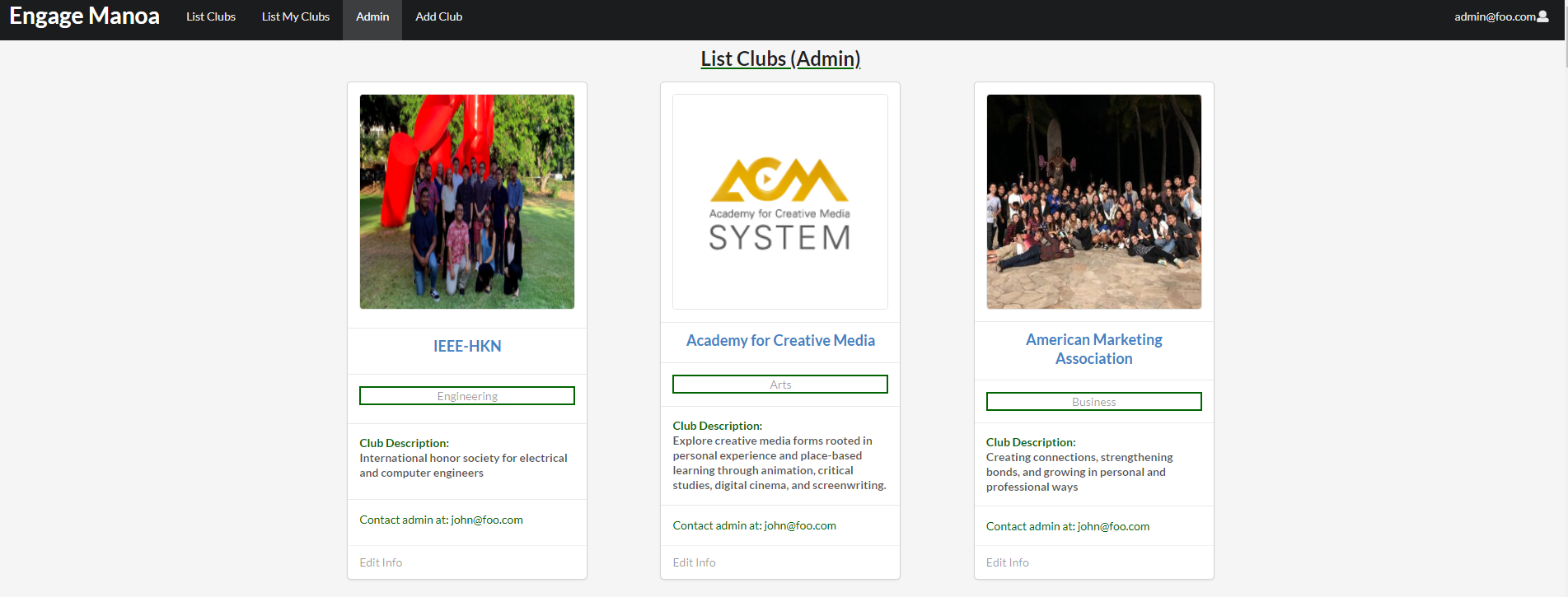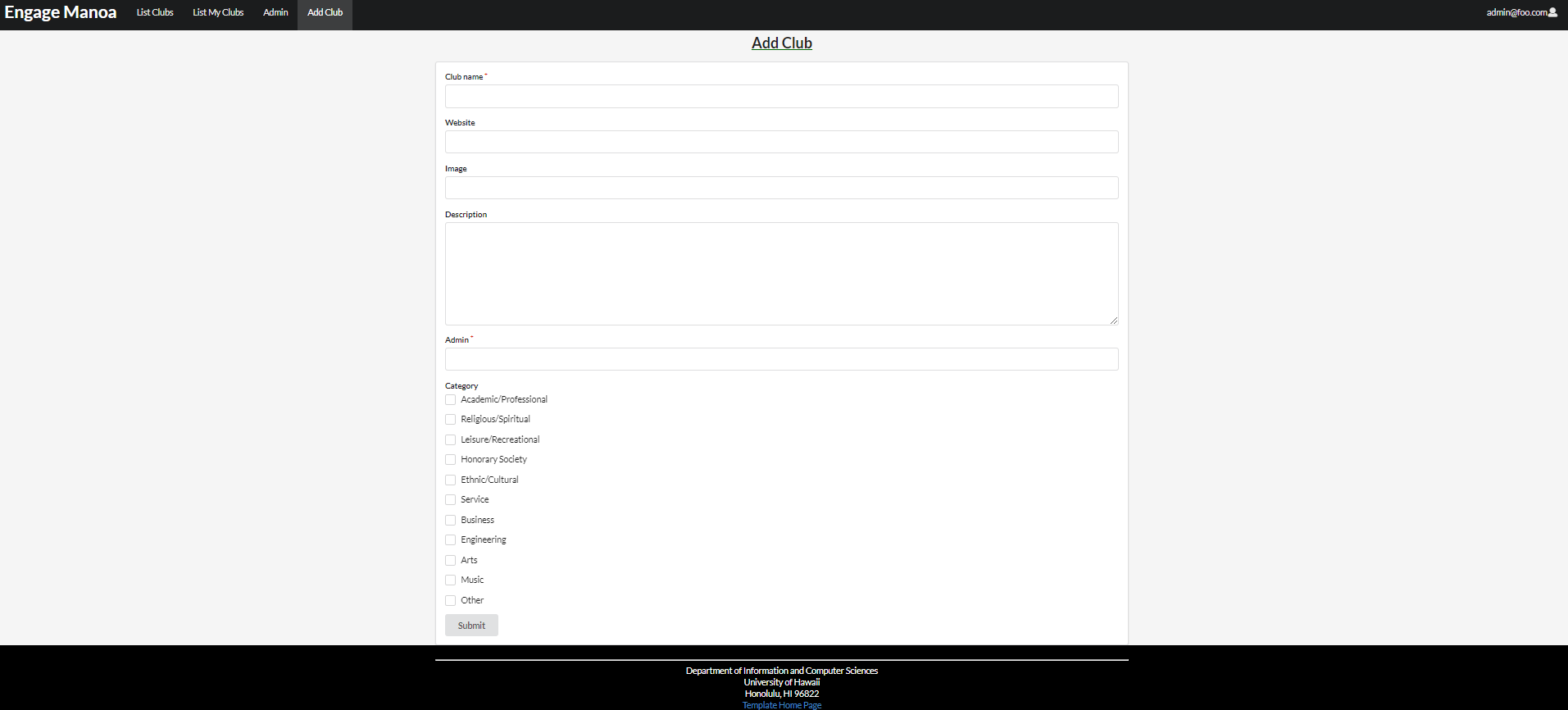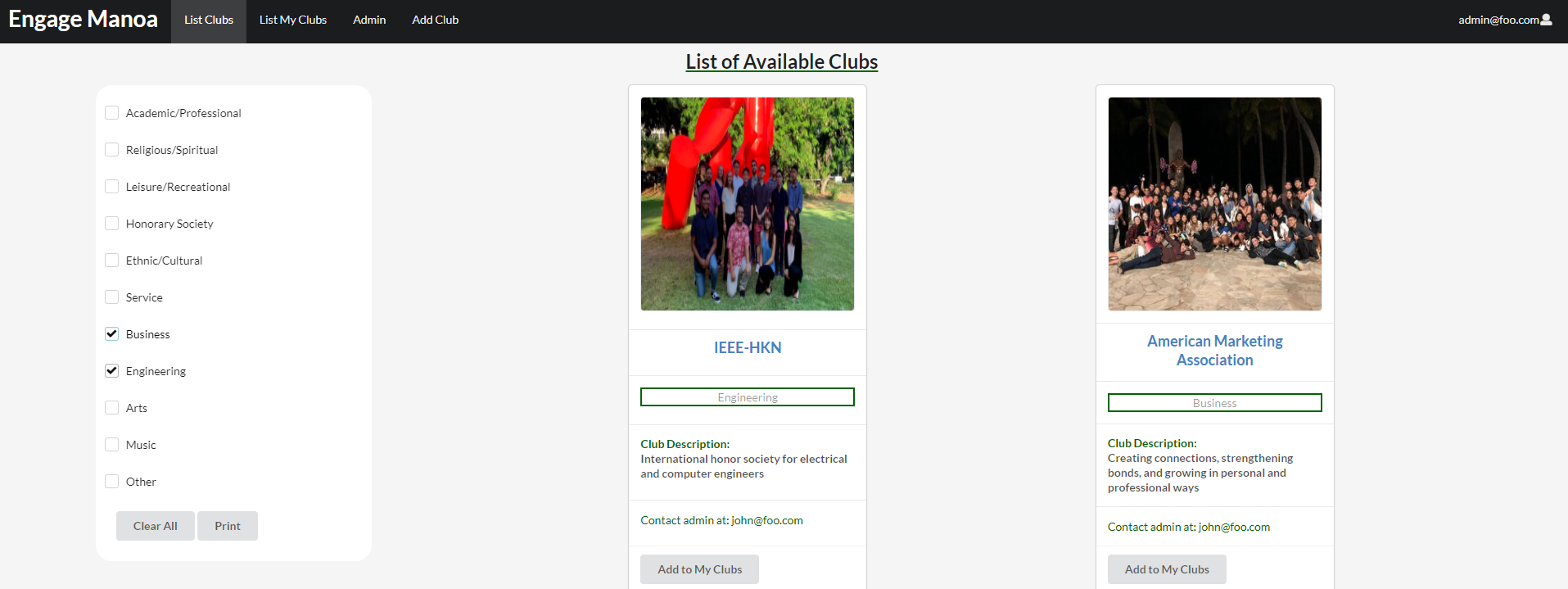Table of contents
Overview
The Engage Manoa website is a centralized directory open to UH Manoa students looking for organizations and clubs. UH Manoa is home to many clubs and student organizations. but there isn’t currently a way to browse the different clubs digitally. The only option is the google spreadsheet which lists all of UH Manoa’s registered independent organizations. Engage Manoa is designed to offer an easily accessible online space for students to find up-to-date information regarding all campus organizations and clubs. Users can create a profile and have access to a full directory to find a club or organization based on their interests.
The website uses
- Meteor - for server and client code
- React - for UI implementation
- Semantic UI - CSS Framework
- Digital Ocean - for hosting and deployment
Deployment
A live deployment of the Engage Manoa site is available at: Engage Manoa
Link to Engage manoa Repo: Engage-Manoa repo
User Guide
Landing Page
The landing page gives an overview of the site.
Login Page
Sign-up Page
You must be logged in to view the following pages
Admin Page
If you’re signed in with an admin account you have access to the Admin Page. The Admin page displays all the clubs in the system and gives you edit access to all of them.

Club Admins
If you are listed as the contact person on UH’s RIO spreadsheet then your email has been automatically registered as that club’s Admin. You must create an account using the email listed on the spreadsheet to be able to change your club’s listing. Please find your club, click edit club info, then add a photo and a description about your club for other users to see.
Edit Club Info
A button to take you to the Edit Club Info page appears at the bottom of a club’s card if you are listed as the manager of a club or are on the Admin Page. From this page you are able to edit the clubs saved info.
Add Club Page
If you’re signed in with an admin account you have access to the Add Club Page. This page allows you to add clubs to the system. Clubs are also can be added through a CSV file.

List Clubs Page
The list clubs page displays all the clubs in the system. You can check which club categories you want to view on the left to filter which clubs are listed.

Development
Milestone 1
The focus of the first milestone was to establish the main structure of the site. We decided to put off working on aesthetics until we have completed the main core functionality of the site.
Milestone 2
Milestone 2 focused on expanding the features of the site. Specifically the club search functionality and adding clubs to your my club page.
Milestone 3
Milestone 3 focused on updating the UI of the site as well as polishing a few features based on feedback.
Community Feedback
We gathered some feedback on the site from multiple members of the UH Manoa student body. We asked questions focusing on the: usability, UI, usefulness, and ways to improve the site. From there, we used the feedback to made changes to the UI and overall application. Most of the complaints for UI was directed towards many of the clubs missing bits of data. This shouldn’t be a problem as the site is designed so the club admin maintains their own clubs info (so most entries on the prototype are missing photos’ and descriptions).
The general consensus was the site was intuitive and was easy to understand (scored 4.6/5 on average for user friendliness). All of the participants thought that it would help them find clubs they would be interested in.
Developer Guide
Installation
First, click the “Clone or download” button to download the GitHup repo to your local file system.
Second, install Meteor.
Next, cd into the app/ directory of your local copy of the repo, and install third party libraries with:
$ meteor npm install
Viewing the app
Once the libraries are installed, you can run the application by invoking the “start” script in the package.json file:
$ meteor npm run start
The first time you run the app, it will create some default data. Once everything is running, your command prompt should display:
=> Started your app.
=> App running at: http://localhost:3000/
Type Control-C twice to stop.
The running application will appear in your web browser at http://localhost:3000. You can either login using the credentials in settings.development.json under “defaultAccounts”, or you can sign up and create your own account in the app.
Loading the default data
There is default data that is stored in JSON format in settings.development.json under “defaultClubs”. This data is loaded into the database upon startup. Additionally, you can load data from a CSV file that is stored as rio.csv. Note that the headers of this CSV file must be: clubName, category, Contact person, Admin, test. The CSV used for the defaultClubs was from the UH Mānoa Approved RIOs entry for 2020-2021.